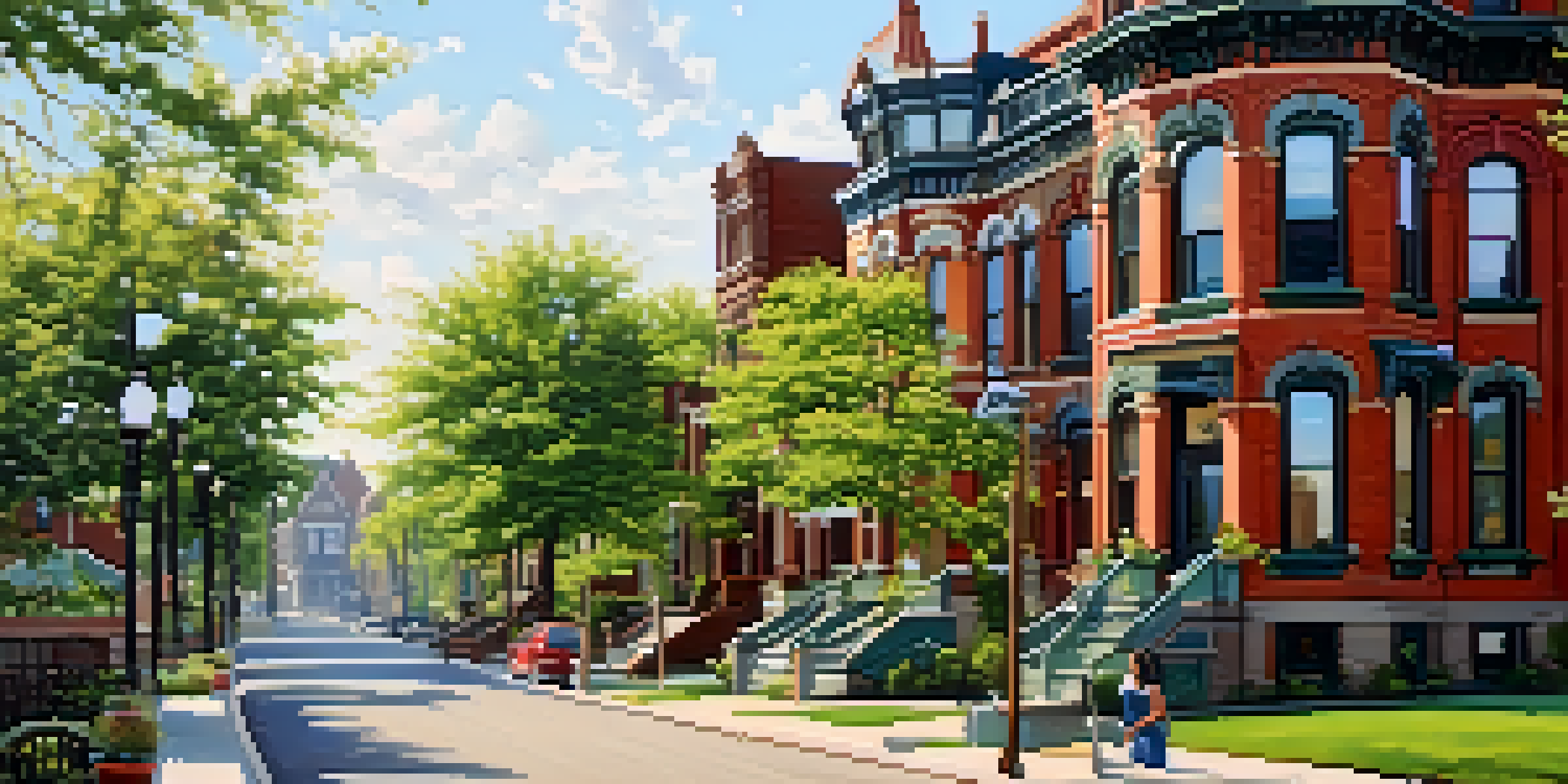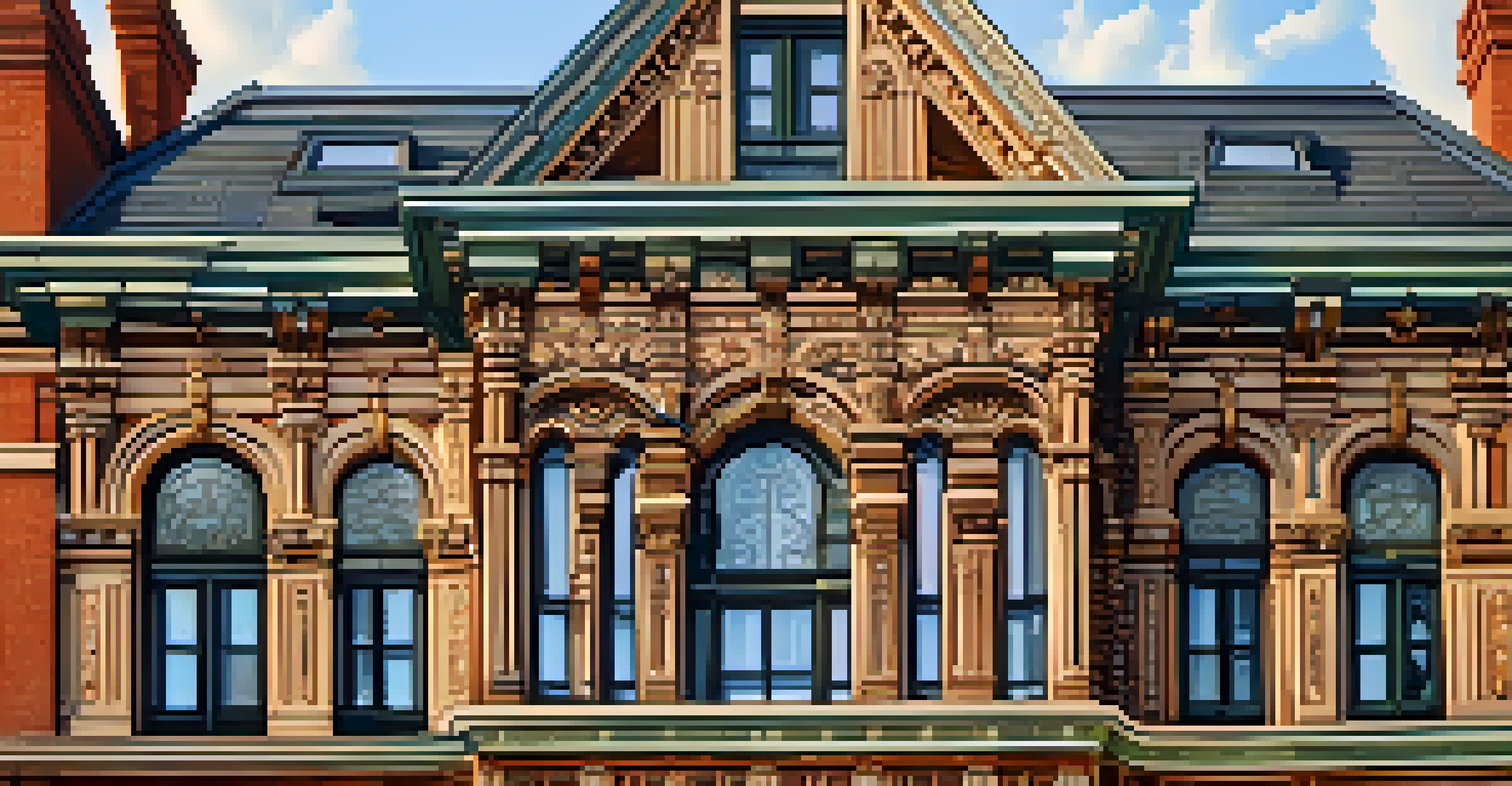The Legacy of Brush Park: Detroit's Historic Neighborhood

Introduction to Brush Park's Historical Significance
Nestled just north of downtown Detroit, Brush Park is a neighborhood steeped in history. Once a fashionable area in the late 19th century, it was home to prominent figures who shaped the city. Today, it stands as a testament to Detroit's rich cultural tapestry, attracting both residents and visitors eager to learn about its past.
History is not a burden on the memory but an illumination of the soul.
The neighborhood's Victorian-era mansions, many of which are being restored, offer a glimpse into a bygone era. As you walk through the tree-lined streets, it's easy to imagine the vibrant community that once thrived here. Understanding Brush Park's historical significance helps appreciate the resilience of its architecture and the stories it tells.
Despite facing challenges like urban decline and economic shifts, Brush Park has shown remarkable endurance. The legacy of its past continues to influence its future, making it a captivating subject for anyone interested in Detroit's history.
The Cultural Melting Pot of Brush Park
Brush Park has long been a cultural melting pot, reflecting the diversity of Detroit itself. Historically, it attracted a mix of affluent families, immigrants, and artists, creating a rich cultural tapestry. This blend of backgrounds contributed to a unique community spirit that is still evident today.

As the neighborhood evolved, it became a hub for African American culture, especially during the Great Migration. The artistic contributions of its residents, from musicians to visual artists, have left an indelible mark on the city. Brush Park continues to celebrate its diverse heritage through cultural events and community gatherings.
Brush Park's Rich Historical Legacy
Brush Park's Victorian architecture and diverse cultural history reflect Detroit's vibrant past and its resilience.
This cultural legacy is not just about the past; it informs the present and shapes the future. As Brush Park undergoes revitalization, efforts are being made to honor its multicultural roots, ensuring that the neighborhood remains a vibrant community for generations to come.
Architectural Marvels of Brush Park
One of Brush Park's most striking features is its architecture, showcasing a range of styles from Gothic Revival to Italianate. These historic homes, with their ornate details and grand facades, tell stories of a time when craftsmanship was paramount. Each building is a piece of art, reflecting the aspirations and lifestyles of its original inhabitants.
Art is the most beautiful of all lies; it is a creative act of imagination that can transform reality.
Many of these homes are undergoing restoration, which has sparked renewed interest in the neighborhood. These efforts not only preserve the architectural integrity but also foster community pride. Walking through Brush Park feels like stepping back in time, where each corner reveals another story waiting to be discovered.
The architectural significance of Brush Park has also drawn attention from preservationists and history enthusiasts alike. As more people recognize the value of these structures, the neighborhood is becoming a focal point for architectural tours and educational initiatives.
Brush Park and the Automotive Industry Boom
The rise of the automotive industry in the early 20th century significantly impacted Brush Park. As Detroit transformed into the Motor City, the neighborhood became a desirable location for many who worked in the booming automotive factories. This influx led to a mix of socioeconomic backgrounds, further enriching the community's character.
During this period, Brush Park witnessed rapid growth and development. New businesses flourished, and the neighborhood buzzed with energy as families settled in, drawn by job opportunities. However, this growth also brought challenges, including overcrowding and urban sprawl, which would later affect the area.
Revitalization and Community Spirit
Ongoing revitalization efforts in Brush Park focus on preserving its historical charm while fostering community engagement and development.
Today, as Detroit continues to redefine itself, Brush Park stands as a reminder of the automotive industry's legacy. The neighborhood's evolution reflects the city's broader story, showcasing how industry and community intersect to shape urban landscapes.
Revitalization Efforts in Brush Park
In recent years, Brush Park has become a focal point for revitalization efforts aimed at restoring its former glory. Local organizations and city officials are working collaboratively to breathe new life into the area. With an emphasis on preserving historical sites while encouraging new development, the neighborhood is seeing a renaissance.
This revitalization is not just about physical restoration; it's also about community engagement. Residents are actively involved in planning efforts, ensuring that the changes reflect their desires and needs. This grassroots approach fosters a sense of ownership among community members, creating a more cohesive neighborhood.
As new businesses and housing developments emerge, Brush Park is poised to attract a diverse population. This blend of old and new not only honors the past but also paves the way for a vibrant future, making the neighborhood an exciting place to live and visit.
The Role of Brush Park in Detroit's Arts Scene
Brush Park has always played a crucial role in Detroit's arts scene, serving as a nurturing ground for creativity. From musicians to visual artists, the neighborhood has inspired countless talents throughout the years. The rich cultural backdrop and historic charm provide the perfect canvas for artistic expression.
In recent years, initiatives have emerged to further promote the arts within Brush Park. Community art projects, galleries, and performance spaces are on the rise, fostering a creative environment that attracts artists from all over. This resurgence not only enhances the neighborhood's cultural landscape but also draws visitors eager to experience its artistic endeavors.
Brush Park's Role in Arts and Culture
The neighborhood has been a nurturing ground for artists, enhancing Detroit's arts scene and ensuring its creative legacy continues.
As Brush Park continues to evolve, its contribution to Detroit's arts scene remains vital. By supporting local artists and fostering creative collaborations, the neighborhood is solidifying its reputation as a cultural hub, ensuring that its legacy of creativity endures.
Community Engagement in Brush Park's Future
The future of Brush Park hinges on community engagement, with residents taking an active role in shaping their neighborhood. Regular meetings and forums allow locals to voice their opinions and ideas, creating a collaborative atmosphere. This sense of involvement fosters a strong community spirit and ensures that developments align with residents' needs.
Engagement efforts also extend to local businesses and organizations. Partnerships are forming to support neighborhood events, promote local artists, and encourage commerce. This collaborative approach not only strengthens community ties but also enhances the overall vibrancy of Brush Park.

As Brush Park looks ahead, its focus on community engagement will be key to maintaining its unique character. By valuing the input of its residents, the neighborhood can continue to thrive while honoring its rich history and diverse heritage.